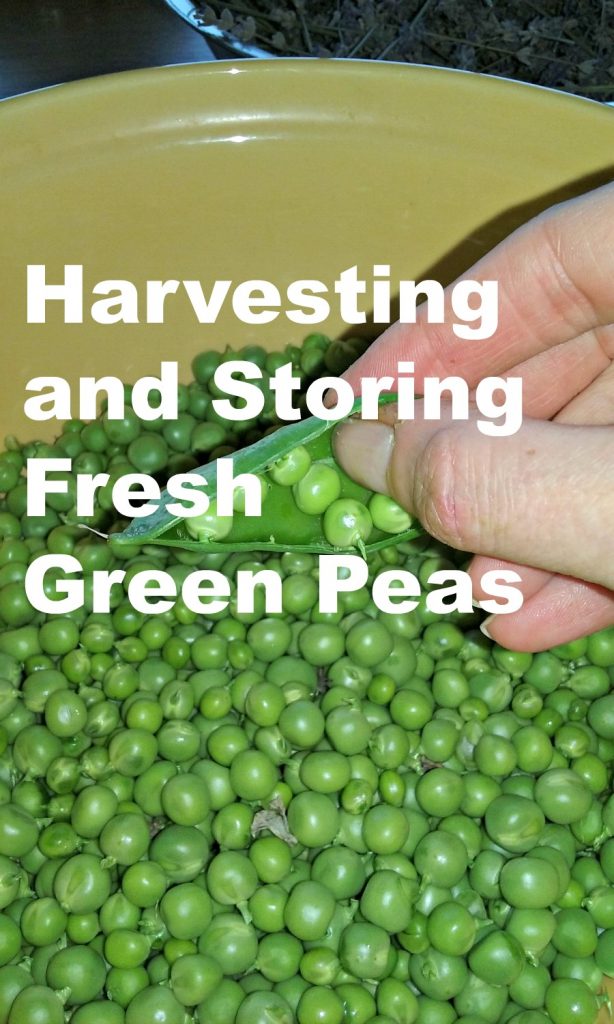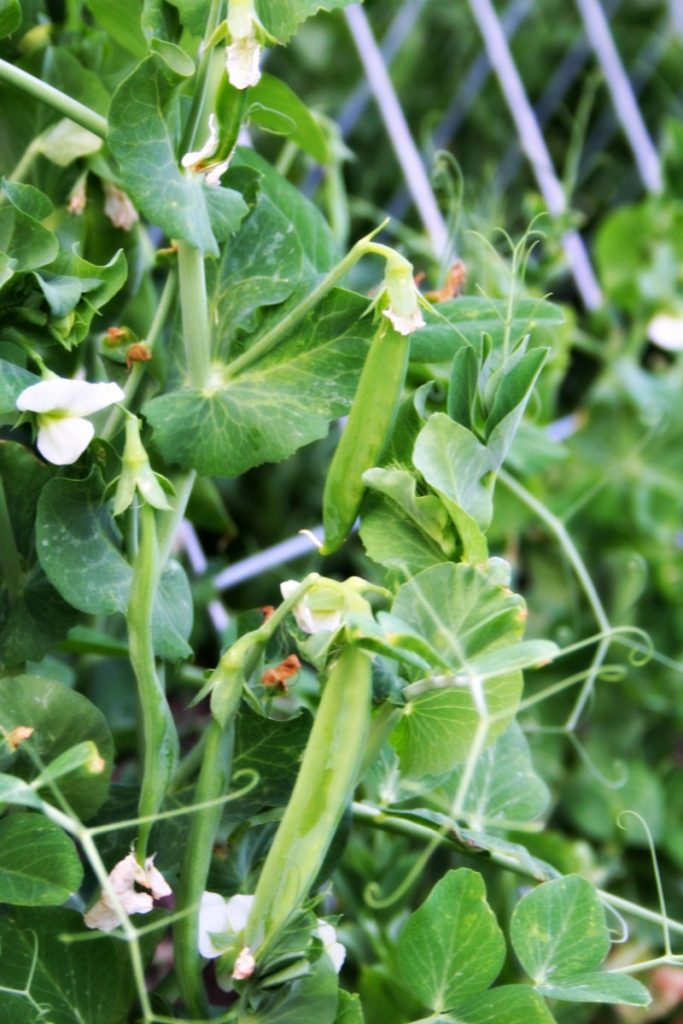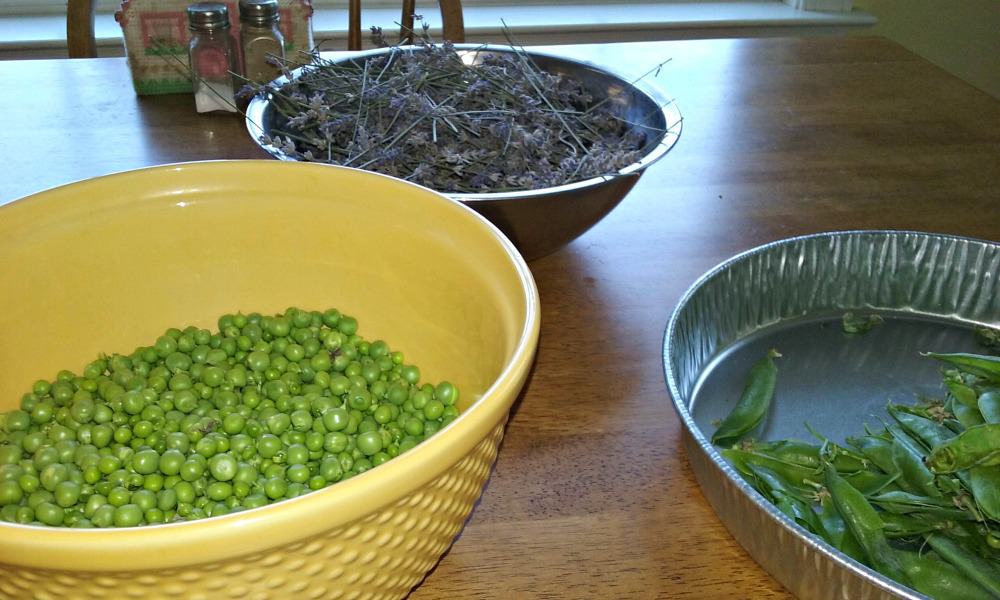Harvest and storing green peas is the big “to do” task in the kitchen in June. It’s almost the Summer Solstice and the peas are coming in thick and fast. The new Vine Spine Linking Trellis system that I have been testing worked great for my sweet green peas. I am now harvesting between one to two quarts per day.

With so many fresh green peas coming in from the garden at once, I need a way to store them for off-season use. Luckily, peas as easy to blanch and freeze.
How to Blanch and Freeze Green Peas
What is blanching? It’s a way to halt the enzymes within the living tissues of the plant, or at least to slow them down significantly so that the food doesn’t spoil in the freezer. It cannot be used to store food outside of a freezer but it does prepare it properly for long-term freezer storage.
To blanch and freeze green peas:
- Shell the green peas. Compost the shells and save the sweet peas.
- Prepare a large bowl of ice water.
- Boil a second pot of water.
- Pour the peas carefully into the boiling water.
- After the peas have been in the boiling water for 1 minute, 30 seconds, remove them from the heat.
- Pour through a colander to drain the boiling water away. (Be careful! It’s hot!)
- Pour peas into the ice bath.
- Allow them to cool completely.
- Drain peas from the ice bath in the colander.
- Carefully pour the blanched peas into freezer safe bags. Label, press out as much air as you can, seal and store in the freezer.
I measure out one cup portions of green peas into each quart-sized freezer bag. This provides exactly one meal’s worth for my husband and myself and makes each bag easier to store. I press the air out so that the bag stores flat, and I layer the bags in our storage freezer in the basement.

Fresh green peas are one of my favorite vegetables. I am so thankful that I have enough room to grow them now. The vines are almost finished and mildew has set in, but I am still picking peas every morning faithfully. And when the peas are done, the beans will go into the raised garden bed. It’s a cycle of growth, harvest, and growth once again that I have come to cherish.






I am growing peas for the first time. Not sure I will have too many to eat fresh, but freezing will be a good way to handle small overages. I have on of the food saver devices and heavy duty bags that was a gift. They are great to use when you want to remove air from plastic bags before freezing. Should work perfect. – Margy